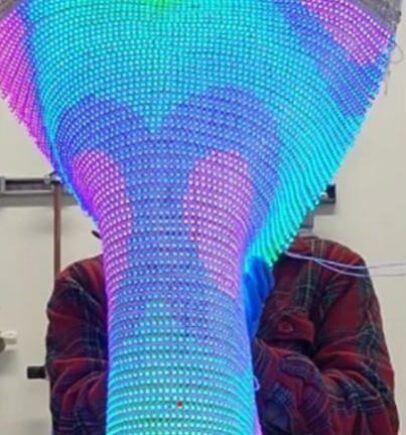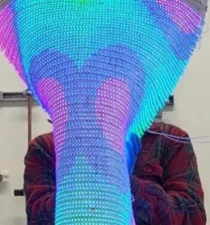Hyung Woo Choi of the Electrical Engineering Division, Department of Engineering, University of Cambridge (Cambridge, UK) was the first author on a recently published article describing the development of a smart textile.

A smart textile can be defined as a woven fabric that contains discrete electronic devices fabricated from or incorporated onto fibers. The team that undertook this research was truly enormous having been composed of 48 authors from 19 different institutions.
Despite the considerable progress in smart textile technology that has been accomplished to date, the team states in their article that “a large scale approach for a smart display system with integrated multifunctional devices in traditional textile platforms has yet to be demonstrated.”
Addressing this issue was the focus of research undertaken by the team. A recent article on this topic published by the team was entitled “Smart textile lighting/display system with multifunctional fibre devices for large scale smart home and IoT applications.” It was published in Nature Communications (2022) and can be found here.
In this article, the team reported on development of means to produce woven fabric that integrates red, green and blue LEDs, wireless energy harvesting and energy storage. Smart sensors were also integrated providing capabilities for touch sensing, temperature sensing, environmental monitoring, biosignal monitoring and photo detection. The team demonstrated their new approach by integrated these electronic capabilities into a series of 46 inch prototype smart fabrics.
This link initiates the download of a short video in which the smart fabric is seen presenting a moving image. The figure below illustrates a section of the electronic smart fabric developed by the team.
 A woven smart fabric integrating electronic capabilities and that was fabricated utilizing technology developed by the team.
A woven smart fabric integrating electronic capabilities and that was fabricated utilizing technology developed by the team.
The technical article includes a great deal of information on the fabrication and testing of the prototype smart fabrics. Here are a few of the top level display related details.
The LEDs in the prototypes were mounted onto a 4 mm wide flexible copper fiber on which the electrodes were patterned by chemical copper etching. Solder paste was applied to each LED mounting location. After placing LEDs aligned with soldering paste on a copper fiber, hot-dry reflowing (< 250?°C, solidifying solders) was used to secure the LEDs. The copper fibers were then woven with cotton fibers using a line by line asymmetry, the ratio being 1:3 for the LED versus cotton thread. This weaving approach was used to avoid distortion when images are displayed on the fabric.
Several prototype smart fabrics were developed. Smart fabrics were fabricated having arrays of red green and blue LEDs in two sizes: 84 x 76 and 120?x?65. Each of these array size was fabricated in a version with a pixel pitch of 5?mm and with a pixel pitch of 7 mm. Features and specifications of the smart fabric include the following:
- Energy harvesting was accomplished using a square spiral 13.56 MHz RF antenna
- Power consumption was on the order of 35 W
- Fabric thickness was less than 5 mm
- Operating voltage was less than 3 V
- Luminance was greater than 104 cd/m2 for RGB
- Colors purity and brightness were maintained under change of fabric shape
The prototypes were represented as demonstrating a smart fabric technology that exhibits full freedom of form factor including flexibility, bendability and rollability. Due to the fact that the smart fabric was fabricated using commercial textile manufacturing techniques, large rolls of functional fabric could, in principle, be made using the new technology.
In addition to the electronic capabilities that the prototypes demonstrated as integratable into a flexible smart fabric, the team has suggested that future work may make it possible to integrate batteries, supercapacitors, solar panels and other devices.
The team concludes their article with the statement that “Our systematic design and integration strategies are transformational and provide the foundation for realizing highly functional smart lighting/display textiles over large area for revolutionary applications on smart homes and internet of things.” – Arthur Berman
Luigi G. Occhipinti, University of Cambridge, [email protected]

